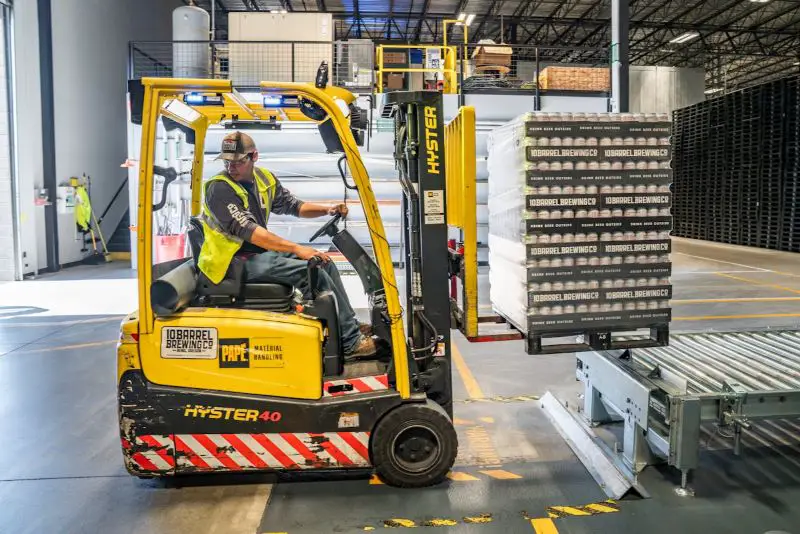Click here to get this post in PDF
Metal pallets, particularly those made of steel, are integral to various industries for their durability, reliability, and ability to withstand heavy loads. However, understanding their weight limits is crucial for safe and efficient operations. In this comprehensive guide, we delve into the weight limits of steel pallets, exploring factors that influence their capacity, offering insights into their optimal usage, and providing additional tips for maximizing their efficiency.
Understanding Steel Pallets
Steel pallets are robust platforms designed to support and transport goods in warehouses, factories, distribution centers, and beyond. Unlike their wooden counterparts, steel pallets offer exceptional strength, longevity, and resistance to elements such as moisture, pests, and fire. These qualities make them ideal for industries requiring heavy-duty handling and storage solutions.
Factors Influencing Weight Limits
Various factors influence the weight limit of a steel pallet, each playing a significant role in determining its capacity:
Design and Construction:
- The design and construction of a steel pallet greatly impact its weight-bearing capacity. Pallets engineered with thicker gauge steel, reinforced supports, and sturdy welds are typically capable of handling heavier loads compared to lighter, less robust designs.
Material Grade:
- The grade of steel used in pallet construction affects its strength and load-bearing capacity. Higher-grade steel, such as stainless steel or high-carbon steel, offers greater tensile strength and durability, enabling pallets to withstand heavier loads without deformation or structural failure.
Dimensions:
- The size and dimensions of a steel pallet play a crucial role in determining its weight limit. Larger pallets provide a larger surface area for distributing weight, potentially allowing for greater load capacities. However, smaller pallets with reinforced designs may also offer substantial weight-bearing capabilities.
Static vs. Dynamic Load:
- Steel pallets are rated for both static and dynamic loads. Static load refers to the weight a pallet can support when stationary, such as when stacked in a warehouse. Dynamic load, on the other hand, refers to the weight a pallet can support while in motion, such as when being lifted by a forklift or conveyor system. Manufacturers provide separate weight limits for static and dynamic loads to ensure safe handling and storage practices.
Rack Compatibility:
- When using steel pallets in rack storage systems, it’sessential to consider rack compatibility and weight distribution. Pallet racking systems have their own weight limits and load capacities, which must align with the capabilities of the steel pallets used. Overloading racks or improperly distributing weight can lead to structural damage and safety hazards.
Determining Weight Limits
While general guidelines exist for steel pallet weight limits, precise capacity calculations often require consideration of specific factors unique to each application. Manufacturers typically provide weight limit specifications based on standardized testing methods and engineering principles. However, it’s essential for users to assess their individual requirements and operating conditions to determine appropriate weight limits for their steel pallets.
Tips for Optimal Usage
To ensure safe and efficient usage of steel pallets within their weight limits, consider the following tips:
Regular Inspection:
- Inspect steel pallets regularly for signs of damage, such as cracks, bends, or weld failures. Damaged pallets should be promptly repaired or replaced to prevent accidents and maintain load-bearing capacity.
Proper Loading:
- Distribute loads evenly across the surface of the pallet to prevent excessive stress on specific areas. Avoid concentrated loads or overhanging goods that could cause instability or structural damage.
Adhere to Guidelines:
- Follow manufacturer recommendations and industry standards regarding weight limits, stacking heights, and load configurations. Adhering to these guidelines ensures safe handling and storage practices.
Training and Education:
- Provide training to personnel involved in pallet handling and storage procedures. Proper training ensures employees understand weight limits, load capacities, and safe operating practices to minimize risks and maximize efficiency.
Consider Environmental Factors:
- Environmental conditions, such as temperature extremes or exposure to corrosive substances, can affect the performance and integrity of steel pallets. Consider these factors when determining weight limits and implementing storage solutions to mitigate potential risks.
Utilize Load-Specific Accessories:
- Depending on the nature of the goods being transported or stored, consider using load-specific accessories such as pallet liners, dividers, or edge protectors to enhance stability and weight distribution. These accessories can help maximize the efficiency and safety of steel pallet usage.
Conclusion
Understanding the weight limits of steel pallets is essential for maintaining safety, efficiency, and productivity in industrial operations. Factors such as design, material grade, dimensions, load type, and environmental conditions influence the capacity of steel pallets to support varying weights. By adhering to manufacturer guidelines, conducting regular inspections, implementing proper loading practices, and considering additional tips for optimal usage, Maximum businesses performance the and longevity of their steel pallets while ensuring the safe handling and storage of goods.
Incorporating steel pallets into warehouse and distribution operations offers numerous benefits, including durability, longevity, and enhanced load-bearing capacity. By understanding the factors influencing weight limits and following best practices for usage, businesses can leverage the strength and reliability of steel pallets to optimize their supply chain operations and support their growth objectives.
You may also like: Advantages of metal structures for industrial construction in Fort Worth
Image source: Pexels.com

